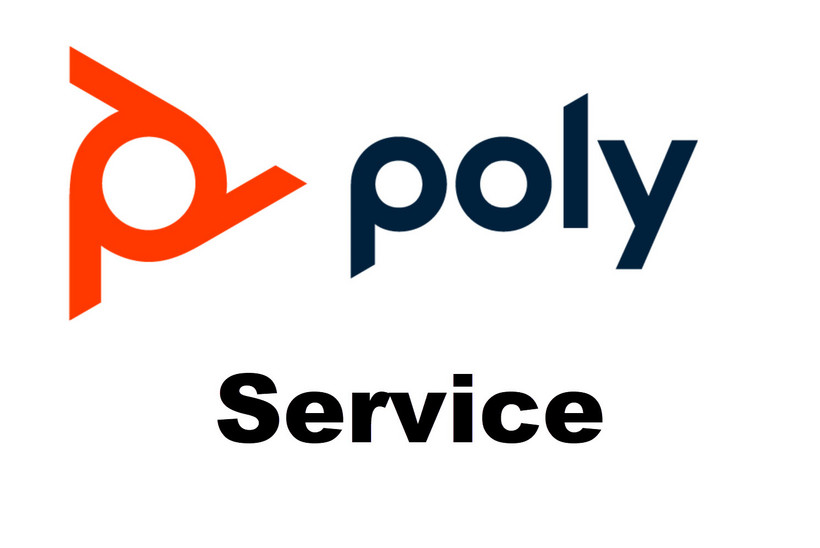



















£380.83*
Prices incl. VAT.
Expected in 5-8 working days
Shipping from £8.99 Product number: 1000031108
- Resolution 3840 x 2160 4K UHD
- Field of view 120°


visunext Services
Frequently purchased together
Product information
The Poly Studio R30 USB video bar provides a dynamic camera experience that keeps everyone in view at all times - making meetings easier and more inclusive than ever with Poly DirectorAI technology. Enjoy rich sound with background noise filtered out so everyone can be heard clearly. IT managers love the ease of setup, management and deployment. And with Poly Lens cloud-based management software, it's a win-win for everyone involved. This plug & play video bar offers maximum meeting quality with minimum effort.
Experience the following highlights:
- With pinpoint automated framing and tracking, Poly DirectorAI technology ensures everyone can be seen with ease
- Connect to Poly Lens via Wi-Fi to ensure the device can be managed from anywhere - even when not connected to a computer
- Enjoy crystal-clear audio and rich sound - thanks to an integrated, powerful speaker with sound attenuation and passive diaphragm
- Make sure you're always heard - with an advanced array of multiple microphones
- Mute out distracting noises and external voices with NoiseBlockAI and Acoustic Fence technologies so your meetings aren't interrupted
THIS USER-FRIENDLY USB VIDEOBAR IS DESIGNED FOR SMALL MEETING SPACES
The Poly Studio R30 USB video bar makes meetings easier, livelier and more inclusive than ever before. Poly DirectorAI technology provides a dynamic camera experience where everyone is always in the picture. Enjoy rich sound with background noise filtered out so all participants can be heard clearly. Even in small rooms, everyone can be heard with the Poly Studio R30.

EXCEPTIONAL VIDEO QUALITY
The high-quality video image of the entire room makes the video bar a perfect solution for video conferencing. Everyone is in the picture and 4K video enables digital zooming without losing a single pixel of clarity.

INTELLIGENT CAMERA TECHNOLOGY
The Poly DirectorAI technology provides an unrivalled video experience thanks to automatic tracking. The camera acts like a director, ensuring that every person in the room is clearly visible.

EXCEPTIONAL AUDIO QUALITY
Thanks to several advanced microphones, Poly Studio R30 captures your voice precisely. At the same time, the Acoustic Fence and NoiseblockAI technologies suppress disturbing noises. The powerful speaker provides sound attenuation that ensures clear voices.

SIMPLE, FLEXIBLE SETUP
The easy-to-use screen mount is included, but if you want more flexibility, we have a solution for you. We offer a wall mount and a VESA mount. Poly Studio R30 is also compatible with standard stands. Whichever setup you choose, simply connect the device to your laptop. Then you can join meetings at record speed.

EXCEPTIONAL VIDEO QUALITY
The high-quality video image of the entire room makes the video bar a perfect solution for video conferencing. Everyone is in the picture and 4K video enables digital zooming without losing a single pixel of clarity.

INTELLIGENT CAMERA TECHNOLOGY
The Poly DirectorAI technology provides an unrivalled video experience thanks to automatic tracking. The camera acts like a director, ensuring that every person in the room is clearly visible.

EXCEPTIONAL AUDIO QUALITY
Thanks to several advanced microphones, Poly Studio R30 captures your voice precisely. At the same time, the Acoustic Fence and NoiseblockAI technologies suppress disturbing noises. The powerful speaker provides sound attenuation that ensures clear voices.

SIMPLE, FLEXIBLE SETUP
The easy-to-use screen mount is included, but if you want more flexibility, we have a solution for you. We offer a wall mount and a VESA mount. Poly Studio R30 is also compatible with standard stands. Whichever setup you choose, simply connect the device to your laptop. Then you can join meetings at record speed.

Technical data
| Name | Poly Studio R30 Conference Camera, 3840 x 2160 4K UHD, 30 fps, 120° |
|---|---|
| Article number | 1000031108 |
| GTIN/EAN | 0197497463187 |
| Manufacturer SKU | 842D2AA#ABB |
| Model name | Studio R30 |
| Brand | Poly |
| Product Type | Conference Camera |
| Product Series | Poly Studio Series |
| Resolution | 3840 x 2160 4K UHD |
| Frames per Second | 30 fps |
| Focus type | Manual & automatic focus |
| Digital Zoom | 5 |
| Field of view | 120° |
| Inputs | 1x USB-C , 2x USB-A |
| wireless technology | Bluetooth , WiFi |
| Features | Microsoft Teams |
| Product width | 42.5 cm |
| Product height | 7 cm |
| Product depth | 7.8 cm |
| Weight | 0.737 kg |
| Colour | Silver |
| Delivery contents | Power cable , Quick user guide , USB-C to USB-A cable |
| Condition | New |
| Warranty | 24 Month |
| Warranty type | Bringin service Service and support information |
Downloads
Product safety
| Person responsible for the EU |
|---|
| HP Deutschland GmbH |
| Herrenberger Straße 140 |
| 71034 Böblingen |
| Germany |
| firmen.kunden@hp.com |






